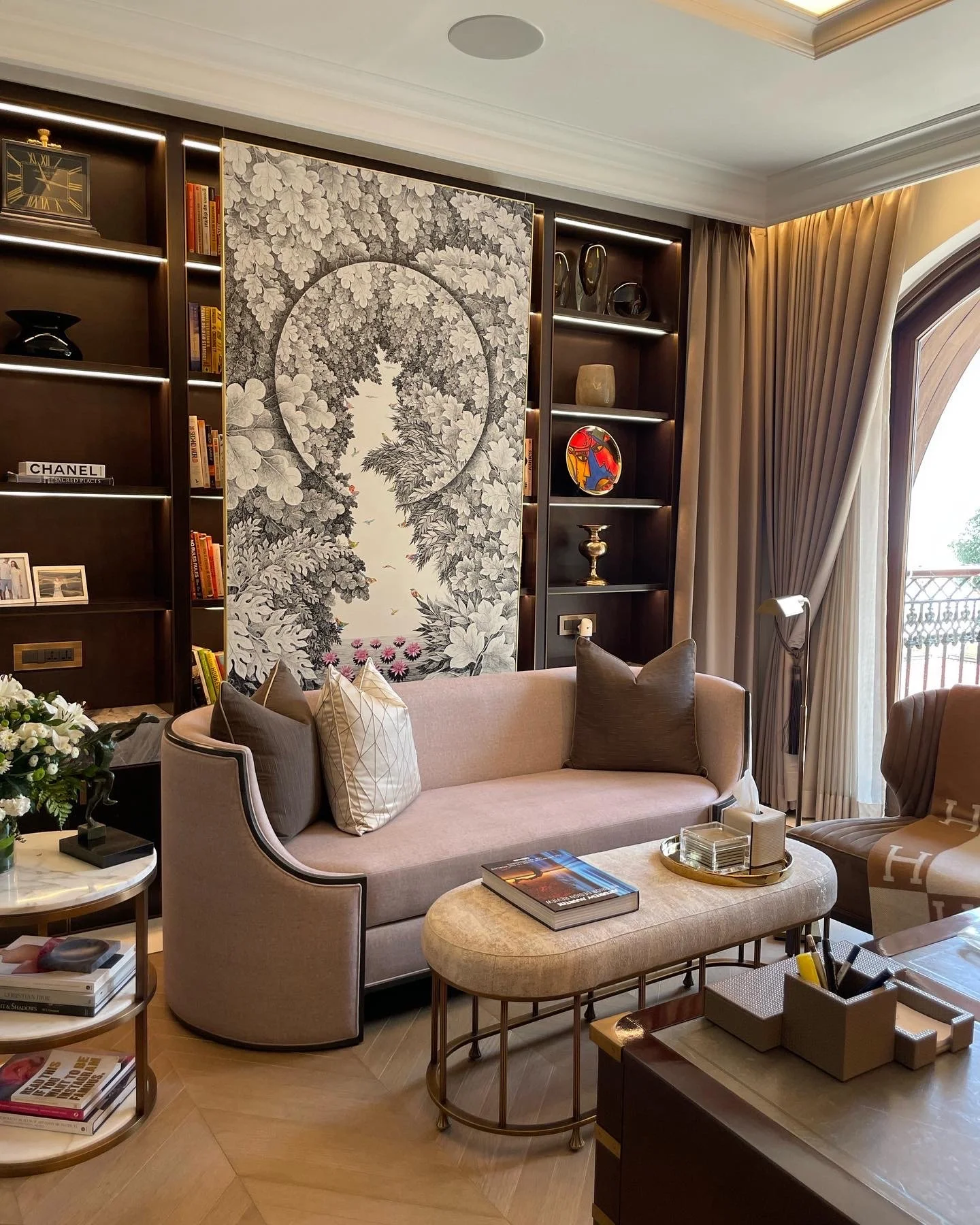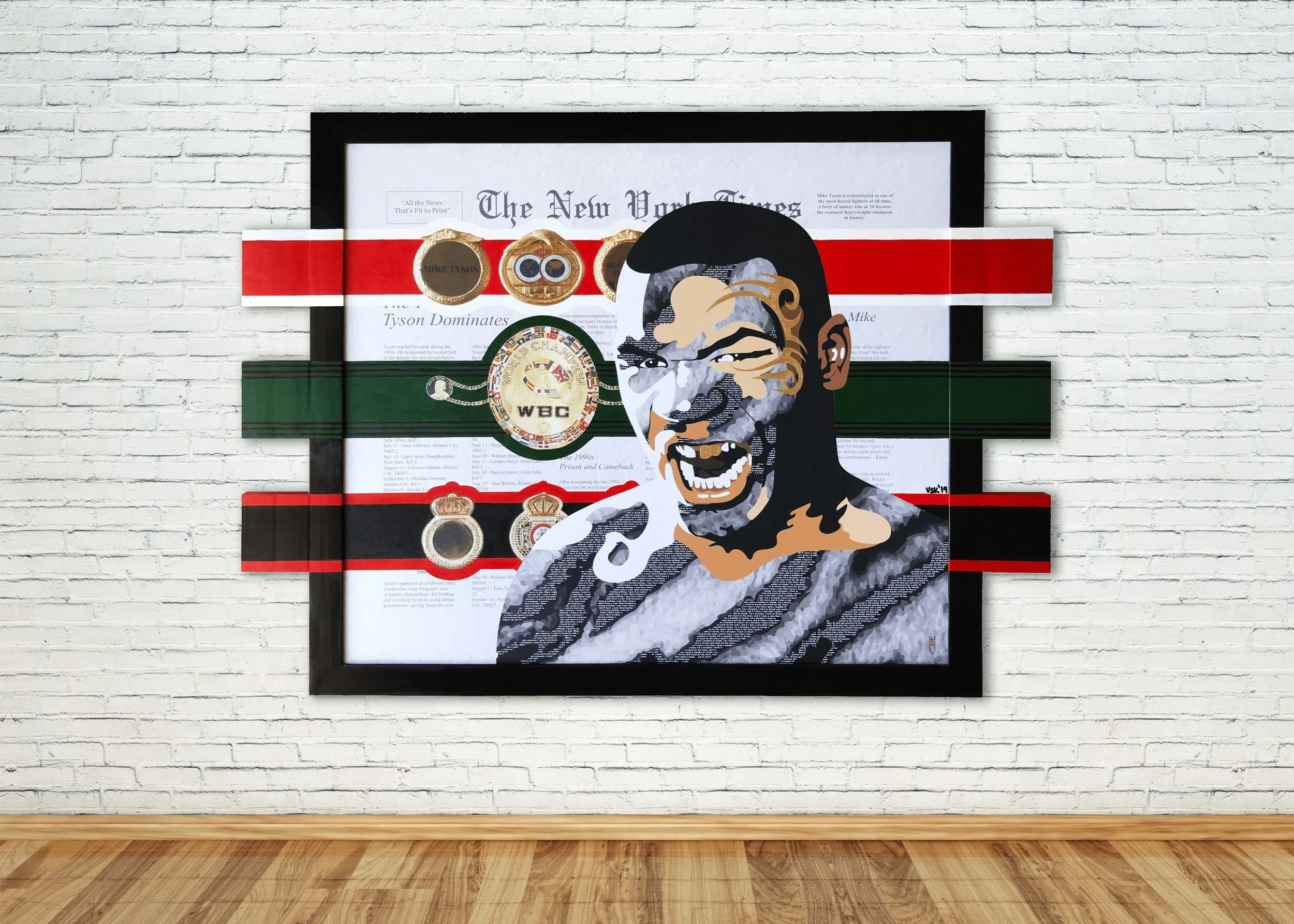The Beauty of Two Souls: The Rise of Customized Art
Whale Seascape. Photo courtesy: Madhavi Adalja
With people spending more time at home post-pandemic, Bindu Gopal Rao tracks the rise of custom art in India: The standard, cookie-cutter work is no longer the preference, as consumers strive for art that reflects their personality and life journey.
When Tara Kumar got married and moved to a new home with her husband, she was clear that she wanted a souvenir from her wedding day to be part of her home décor. “When I asked an artist friend, she suggested preserving some of my wedding flowers in resin. Today, it occupies an important place in our bedroom,” says Kumar. Being an art enthusiast, she says that after this piece, she will only choose custom art over readymade pieces as she is a stickler for memories.
Then, there’s the case of Asha Kapur, who was left heartbroken after the loss of her pet dog. “My cousin suggested that I get his leash framed which I got done with his portrait by an artist. I have it in my room and feel he is around, even when he is not,” she says. Kapur believes that while custom art is a great way to preserve memories, she is open to buying traditional art for other areas of her home, especially her living space.
When the artist is approached by a customer to create something unique, it helps to create a deeper and more personal artist-consumer relationship. Once the artist is privy to personal details of their client—their loved ones, their likes, and dislikes—they almost feel almost like a biographer, helping to depict the life of their client in their own unique way.
By its very definition, customized art is unique and personal—reflective of each individual. Customizing art helps to express oneself, just like how one does it through clothing, accessories, etc. It is a perfect way to express your artistic and aesthetic interests in a way different from most.
“[Custom art] helps in adding a personal characteristic in all forms,” says Madhavi Adalja, an artist for custom art store. “Customizing art is very important to express your feelings, memories, gifts, and the like. It talks about personal experiences, interest, thought process, and emotions. ‘Custom’ is something that is ‘made or done-to-order’. Bespoke, unique, and differentiated from generic products. What favourite art says about an individual goes deeper than just what looks good to their eyes.”
One of the newest trends in customized art for residential spaces is using aspects of personal life: likes and dislikes, family and friends, hobbies, careers, special memories, to create a stylised portrait in an abstract form. Vidushie Shriya Kandoi, another artist who specialises in custom art says, “One of my recent projects was a piece commissioned by the Director of Century Ply Ltd. for his personal office chamber. The piece has elements that hold meaning for him depicted in the form of a vintage 1920s Rolls Royce Phantom car parked at Old Trafford (the home stadium for Manchester United). The painting was created to add a personal touch to his workspace and to act as a visual focal point in an otherwise minimalist and zen room.”
Kandoi has also worked on a commission from a client that pays homage to one of his idols, Mike Tyson. This is a mixed media art piece in digital art and acrylic on canvas and wood. The artwork depicts Mike Tyson’s illustrious career in the field of boxing, showing his many world titles, his career path and some of his iconic quotes.
Photo courtesy: The Artemist
Clients are keen to see art that is reflective of their own characteristics. They like the art to narrate their stories and journeys, something that speaks to them and is exclusively owned by them. Post-pandemic, people have started spending more time at home, and are increasingly more house-proud, as they want a home that reflects their personality. Standard, cookie-cutter art is no longer a preference; the millennial homeowner is actively looking for unique, customized art that reflects their life journey.
“I foresee home décor moving away from old cliched trends of following interior design blogs and magazines to capitalise on the latest trends,” says Kandoi. “People are increasingly interested in creating unique spaces that are indicative of themselves and this trend will only gain popularity over time.”
Custom art also succeeds in bringing the artist and the consumer closer, and takes away the somewhat ‘elitist’ tag that art is often associated with. When the artist is approached by a customer to create something unique, it helps to create a deeper and more personal artist-consumer relationship. Once the artist is privy to personal details of their client—their loved ones, their likes, and dislikes—they almost feel almost like a biographer, helping to depict the life of their client in their own unique way.
Ravina Drolia, the creative head at an art-consultancy says, “A new trend we have seen is clients wanting customized art on uncommon places, for example on furniture, to make a statement. Being art consultants, we are a bridge between the artists and consumers. Understanding the consumers' requirements and then connecting them with the right artist as per the brief, space, and budget, is where we come into the picture. We have seen clients narrate their journey and vision over time and build a sort of bond where they start trusting the artist’s process and outcome. Most of them always come back to place a repeat order or recommend us to their circles.”
Technology in this space is really an accelerating tool in making quick and accurate decisions. There are several art platforms that use technologies like Artificial Intelligence, WebXR, Machine Learning and Natural Language Processing to make this possible. These technologies are being deployed to make your surroundings an extension of who you are by re-creating your fondest memories that have been locked away in your digital devices, by bringing them to life using features to turn it into a framed story.
Many mixed media artists create parts of their art on a tablet with a stylus which helps generate a unique output. Technology can also help by creating mock-ups of the space so that clients get a sense of how the finished product will look and interact with their interior aesthetic. The process will include starting with video consultations for clients anywhere in the world to being able to use digital software to show exactly what the artwork will look like in your space.
Tyson. Photo Courtesy: Vidushie Shriya Kandoi
As an artist’s first choice is always to find a way to express their own influences and own self, the question then is also how artists feel when they are asked to work on the vision of another person. Kandoi says, “Art is individualistic. Every piece of art carries a portion of the artist’s soul within. But the beauty of custom art is that it contains not one, but two souls: the artist and the client. When I create custom art for a client, I’m reinterpreting their thoughts, feelings and emotions in my own style. It’s a very personal exercise for both of us. While it does not offer the same freedom as a blank canvas, what does come out at the end is an amalgamation of the artist and the client: their thoughts and emotions through my lens; a beautiful symphony of two lives expressed visually.”
“The pleasure that I obtain from bringing someone else's dream to life is what always keeps me going,” adds Adalja. “To curate a piece for art for your own self depicting your apprehensions and emotions seems very serene. It is when you can depict what someone's feelings via your art, is when you get the feeling of triumph. Customization for customers not only challenges me to widen my creative horizon but also helps me push my prolific zones. There are times when customization seems difficult but I always have my first foot forward on accepting those challenges and bringing their dreams to life."
Customized art is gaining traction as the popular choice amongst millennials looking to do up their homes. The bigger case that this is making is that people are now approaching artists to make art for them, which also encourages artists. And while this makes financial sense, there is also creative satisfaction as art is also about bringing personal interpretations to the fore. Being ‘unique’ is the mantra most people are opting for and custom art ticks all the boxes as it is affordable, sentimental and something that is truly special—yet presented in a trendy manner.
***
Bindu Gopal Rao is a freelance writer and photographer based in Bengaluru. She is passionate about all things to do with the environment. You can follow her on Instagram @bindugopalrao.



